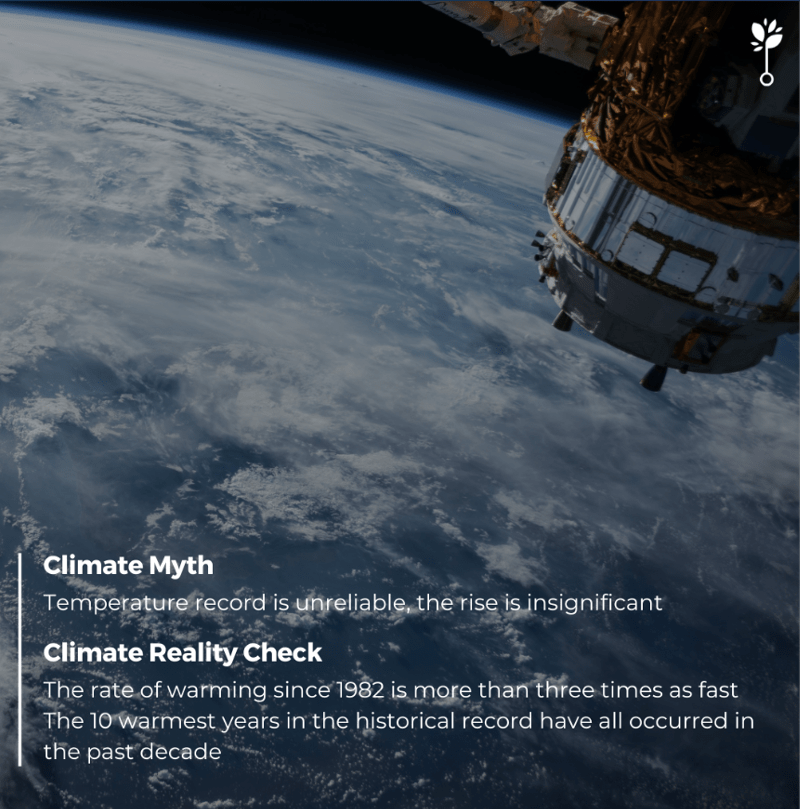26/03/2024
Debunking Climate myths
Social responsibility
In the era of information, where anyone can express their opinions on the internet, climate change denial has found a breeding ground in the social media. One persistent climate myth revolves around the unreliability or the insignificance of temperature rise. For example, a few years ago in the United States, an online project attempted to challenge the credibility of temperature data by scrutinizing weather stations. The underlying belief was that if these stations were discredited, the entire concept of global warming could be dismissed as a hoax. However, a closer examination reveals that this approach neglects the comprehensive efforts made by professional climate scientists to ensure the accuracy of temperature records.
Climate scientists are well aware of potential factors that can introduce outliers into temperature datasets. One notable example is the urban heat island effect, which refers to the phenomenon where urbanized areas experience slightly higher temperatures due to human activities. NASA’s Goddard Institute for Space Studies employs meticulous methods to account for such influences when compiling temperature records.
To mitigate the urban heat island effect, scientists compare the temperature trends of urban areas with those of the surrounding rural countryside. By aligning the urban trend with the rural trend, they effectively eliminate the localized impact of urbanization, providing a more accurate representation of regional temperature changes. This process is not a manipulation of data but a scientifically validated method to enhance the reliability of temperature records.
The scientists say that: “The rate of warming since 1982 is more than three times as fast- 0.20° C per decade” and “The 10 warmest years in the historical record have all occurred in the past decade (2014-2023)
Important to know: Global temperatures have been on the rise since the Industrial Revolution, with human activities, particularly greenhouse gas emissions, primarily responsible for this warming. A continuing analysis led by NASA’s Goddard Institute for Space Studies indicates that the Earth’s average global temperature has increased by around 1.1°C–1.2°C since 1880. The majority of this warming has occurred since 1982, with a rate of approximately 0.15 to 0.20°C per decade.
It’s essential to note that global warming doesn’t entail uniform temperature increases everywhere, as variations occur due to factors like thermal inertia. Land experiences more warming than oceans, and temperature changes can differ significantly within specific regions and ocean basins.
While daily local temperatures fluctuate, global temperature depends on the balance between incoming solar energy and outgoing heat radiation. A one-degree global change is significant, given the immense amount of heat required to warm the entire Earth. Small temperature shifts have had substantial historical impacts, from the Little Ice Age to the ice age that covered parts of North America.
Check original data
https://earthobservatory.nasa.gov/world-of-change/global-temperatures
https://www.climate.gov/news-features/understanding-climate/climate-change-global-temperature
ESG Activator
Find out more how the TGS ESG Activator can help your firm





